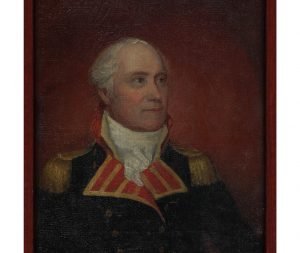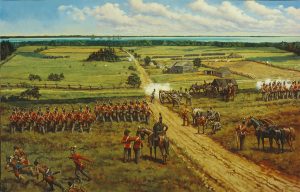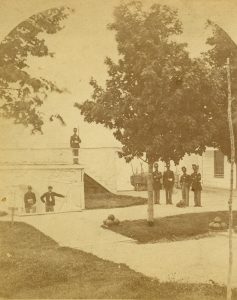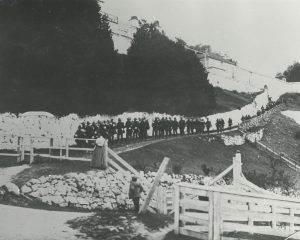Veteran’s Day is the Federal holiday which encourages Americans to take a moment to reflect upon and honor the sacrifices of every generation of Americans that have served the country in the Armed Forces from its inception to the present. The holiday originated as a proclamation by President Woodrow Wilson in 1919 to commemorate the cease fire which signaled the end of the “war to end all wars,” World War I, on the eleventh hour of the eleventh day of the eleventh month as Armistice Day. In the words of President Wilson, “the reflections of Armistice Day will be filled with solemn pride in the heroism of those who died in the country’s service and with gratitude for the victory, both because of the thing from which it has freed us and because of the opportunity it has given America to show her sympathy with peace and justice in the councils of the nations…” This serves as a powerful description of what the holiday today known as Veteran’s Day is intended to reflect in commemoration of those who have served the country and it’s ideals in the military not only during WWI but over the course of the nation’s entire history.
As Veteran’s Day approaches, Fort Mackinac serves as an ideal reminder of the generations of Americans who have served the nation. An active United States military post for nearly a century, it has served as an integral part of America’s military heritage from its literal beginning which seems entirely proper and fitting to commemorate the various generations of “veterans” who have served over course of the fort’s service to the nation.


Originally built by the British at the tail end of the American Revolution, the first United States troops to occupy Fort Mackinac were a composite company of about 90 artillerymen, engineers, and light infantry from the 1st U.S. Sub-Legion under the command of Major Henry Burbeck. Burbeck became Fort Mackinac’s first commandant and accepted the transfer of the fort to American control in 1796. The principal mission of U.S. troops stationed here was to protect and oversee American fur trade interests in the upper Great Lakes region, which was of major economic concern at this point in time, and maintaining good relations with the powerful tribes of northeastern Native Americans whose traditional homeland surrounded the fort.
Despite the significance and size of these tasks, it was not long before they were further complicated by the reduction of the garrison to only 35 infantry and artillerymen with command responsibility downgraded to Lieutenant Richard Whiley. This reduction, which would reflect a consistent trend over the course of the fort’s use, was due largely to a strained national military budget. This was in large part a response to a long standing suspicion within American culture of a large standing army that would remain a relevant factor in American defense planning well into the 20th century. While the size of the garrison would consistently ebb and flow throughout the rest of the century, it would generally remain an understrength single, company garrison.


During the War of 1812, the soldiers of Fort Mackinac, who consisted of less than 60 U.S. artillerymen under the command of Lieutenant Porter Hanks, were the first U.S. troops to be engaged in combat operations on the 18th of July of that year. They also had the dubious distinction of being taken off guard and unaware that the nation was even at war, forced to surrender without firing a shot by a joint force of around 600 British regulars, Canadian militia and regionally based Native Americans, who landed on the north side of Mackinac Island and secured the high ground located behind the fort. A subsequent joint American Army and Navy operation, including a land battle on the north side of the island in August of 1814, failed to dislodge the British. With this American defeat, the fort would not be returned to American control until after the Treaty of Ghent in December 1814, which ended the war and returned territorial control to what it had been prior to the outbreak of the war. This would be the last time Fort Mackinac served as a strategic military target during its existence.


Following the War of 1812, border tensions between British Canada and the United States remained. Fort Mackinac briefly served as the headquarters for the 3rd U.S. Regular Infantry, with 355 men or the equivalent of over 3 companies of soldiers in its duties to guard the border. This marked the only time in the fort’s history where it served as a regimental headquarters as well as the largest number of troops to be housed at the fort at any single time. However, from 1815 onward, Fort Mackinac’s relevance as a post of strategic concern steadily decreased to a point of irrelevance, although it remained a storage and staging point for soldiers to be stationed and deployed from as needed. Troops from Fort Mackinac were deployed on four separate occasions between 1837 and 1861: in support of U.S. military operations in the Second Seminole Indian War in Florida in 1837; the Mexican American War in 1847; peacekeeping between Seminole Indians and Americans in Florida again in 1856; and the outbreak of the American Civil War in 1861. The fort briefly served as a political prison during the spring and summer of 1862 by a Federal militia company from the Detroit area known as the Stanton Guard, tasked to guard three Confederate political prisoners. This was the height of the fort’s use during the Civil War.
With the end of the Civil War, the U.S. Army had to balance a drastic reduction of numbers with the dual mission of enforcement of Federal Reconstruction policies in the former southern Confederate States and protection of U.S. westward expansion. Both tasks met with armed resistance by white southerners opposed to Reconstruction policies dedicated to equality enfranchisement for African Americans and Native Americans who attempted to defend their traditional homelands from white encroachment. However, the focus of America in general shifted from the tragedies and subsequent challenges that followed in the aftermath of the Civil War to the economic boom of the industrial revolution as well as an increased interest in tourism and recreation. Mackinac Island found itself a premier destination in this pursuit, becoming America’s second national park in 1875. Prior to the establishment of the National Park Service, it was the responsibility of the Army to oversee America’s national parks which it did at Fort Mackinac until 1895 with the fort commandant as the park superintendent. This brought new challenges to the Army which required it to take on responsibilities that were not typical expectations of a soldier’s training. In order to support these efforts, the Army ultimately assigned two companies of soldiers from the 22nd and 23rd U.S. Infantry Regiments that carried out the operations required to maintain Mackinac Island as a national park during the two decades of its existence as such. During this time the fort also benefited from major structural internal improvements, modernization and technological advancements that benefited the soldiers expected standard of living as well as earning the fort the distinction of being a “desirable station” among the troops themselves.


Faced with constant budget strain, by the early 1890’s the Army had little justification from a military standpoint to maintain Fort Mackinac as a military base and closed it in 1895, with the last 11 U.S troops under the command of Lt. Woodbridge Geary departing from the fort after jurisdiction of the fort and park was transferred to the State of Michigan. The Mackinac Island State Park Commission continues to maintain the history and heritage of the site to the present time in which it stands as a tribute to the generations of military veterans who served the United States and who our nation honors along with the subsequent generations that followed them every Veterans Day.








